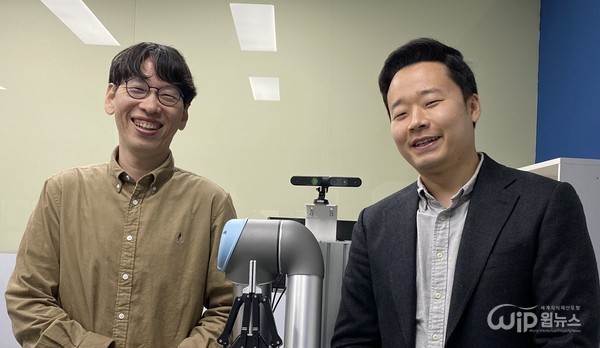2nd largest in market capitalization cryptocurrency Ethereum technology error…Researchers from Seoul National University have found it
Seoul National University researchers research achievements contribute greatly to stabilizing cryptocurrency

Professor Byeong-gon Jeon and Dr. Yeong-seok Yang Department of Computer Science and Engineering College of Engineering Seoul National University
A Korean research team drew attention by developing a system to detect fatal blockchain technology errors and find additional bugs (Flaw of computer program). Seoul National Universitys College of Engineering announced on the 7th that Byeong-gon Jeon a professor at the Department of Computer Science and Engineering Yeong-seok Yang a Dr. at the Department of Computer Science and Engineering and Tae-soo Kim a professor of Georgia Tech through the cooperation research they have developed Fluffy which is seeking consensus bug of the Ethereum due to differences in multi-transactions fuzzer.
Launched in 2015 Ethereum is a programmable blockchain that is based on the cryptocurrency Ethereum which ranks second in market capitalization. Developers can use Ethereum to develop various kinds of applications (apps) which are being used as the global currency of the blockchain development world. Professor Jeons team discovered two consensus bugs that rarely occur in Ethereum while studying blockchain security last year.
Blockchain consensus means that decentralized client nodes are agreed into a single blockchain. A consensus bug is a bug that prevents certain blockchain clients from agreeing with other clients by hardforking (Changing the blockchain to a new method that is not compatible with existing blockchain) the blockchain preventing consensus bugs in advance is very important for blockchain safety.
Professor Jeons team reported the mistake to Ethereum Foundation (Ethereum operating company) which distributed a new version of Ethereum Client fixing the bug. Professor Jeon and his team who found the error received $20000 (about 22.36 million won) as the bug bounty prize from the Ethereum Foundation. The services that were using the old version got paralyzed on November 11 last year since the previous version client (Geth Ethereum Client) hardforked Ethereum blockchain before revising the bug. At that time major services such as Ethereum infrastructure provider Infula and browser Ethereum Wallet Metamask became unavailable the developers and investors experienced difficulties. Due to this malfunctioning Ethereum deposit and withdrawal services at major domestic and international cryptocurrency transaction sites such as Binance and Bithumb were temporarily suspended. Blockchain specialized media credits the incident as the worst case since the 2016 Ethereum DAO hacking incident.
Professor Jeons research team not only finding errors but suggested alternative measures too. The differences in multi-transactions fuzzer Fluffy is the point. The existing fuzzing method of searching for the Ethereum consensus bug is to repeatedly generate and test a single transaction with the blockchain state. However there is a limitation that basically the bug hidden deeply inside the Ethereum client code could not be found even if the infinite computing resource are beeing used. The Fluffy proposed by professor Jeons team search the consensus bug hidden deeply inside the Ethereum client code by testing several transactions at the same time. Through system optimization Fluffy achieves 510 times more fuzzing processing amount compared to the existing fuzzer and 2.7 times above of the code coverage.
Professor Jeon said We have found the Ethereum bug hat was hard to be found previously with the fuzzer developed this time. and added It is a great influential research that is enhancing the stability of the Ethereum which is the worlds 2nd largest cryptocurrency and as recognized the contribution it was adopted as thesis in OSDI(USENIX Symposium on Operating Systems Design and Implementation). His teams research result will be presented in OSDI in this upcoming July.
Website: : http://www.wip-news.com/news/articleView.html?idxno=6204
